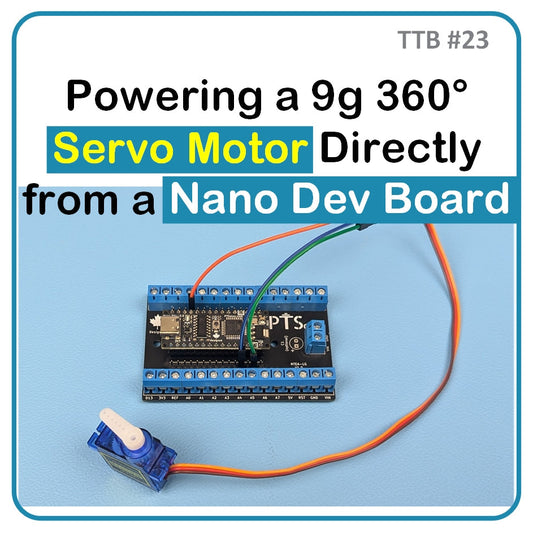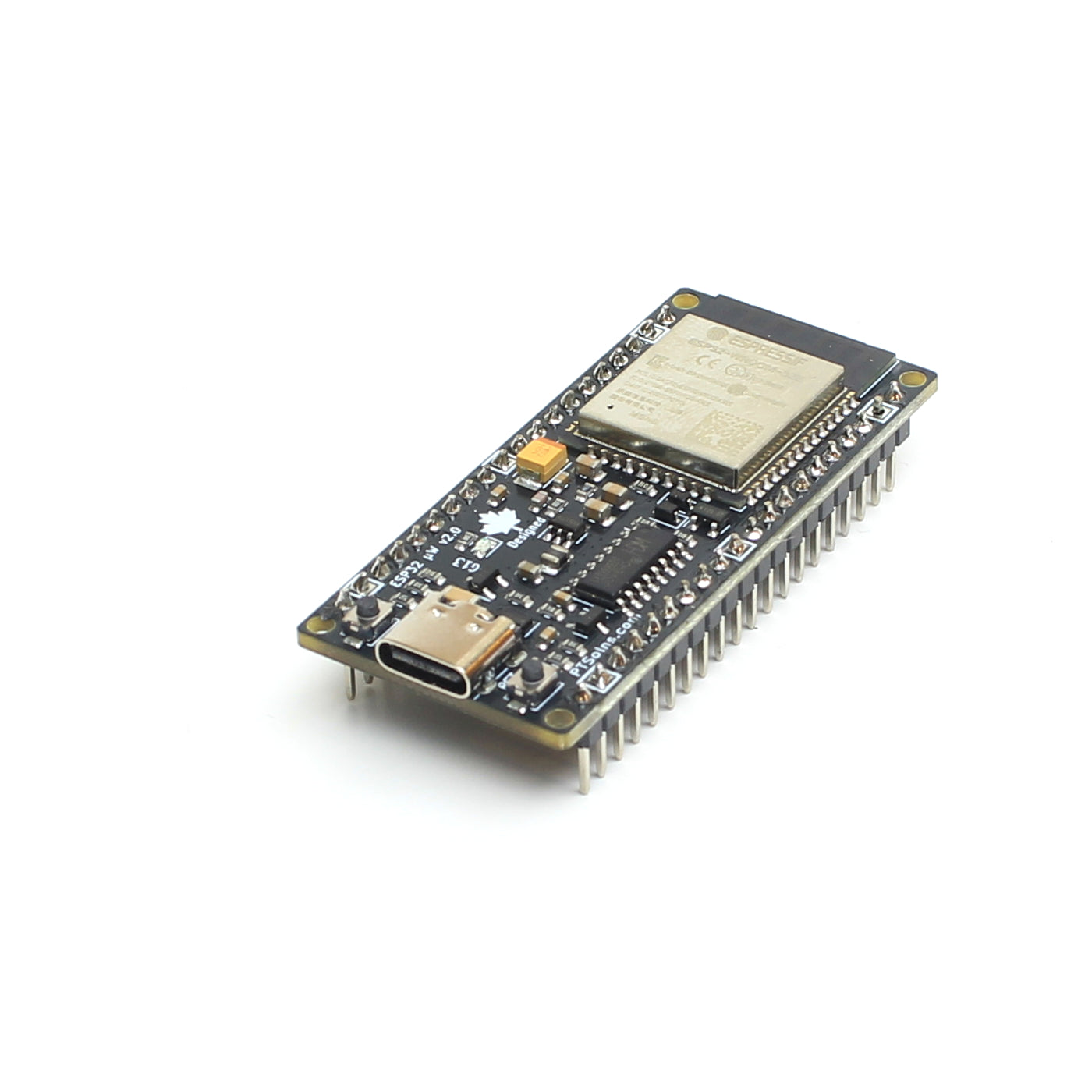Tinker Thoughts Blog
Welcome to the Tinker Thoughts Blog — hands-on projects, practical tutorials, and insightful tips in the maker and electronics space. We dive into a wide range of topics including Internet of Things (IoT), electronics troubleshooting, home automation, rapid prototyping, and RF communication. You’ll also find detailed guides on 3D printing custom enclosures and PCB mounts, as well as experiments in electrical circuits, embedded systems, and other DIY innovations. Whether you're a hobbyist, engineer, or curious tinkerer, you'll find inspiration and technical depth here.

TTB #28: Node-to-Gateway LoRa Network
This tutorial demonstrates how to build a simple and reliable node to Gateway LoRa network using the PTSolns LoRa SX1276 915MHz Shield and a compatible Uno development board. Assuming a working nearby Gateway, this tutorial shows how to configure The Things Industries End Device so to work with the Shield. Full sketch and steps are provided. Hardware setup is minimal, requiring only stacked shields and USB cables, making this an accessible starting point for long range wireless experimentation.
TTB #28: Node-to-Gateway LoRa Network
This tutorial demonstrates how to build a simple and reliable node to Gateway LoRa network using the PTSolns LoRa SX1276 915MHz Shield and a compatible Uno development board. Assuming a working nearby Gateway, this tutorial shows how to configure The Things Industries End Device so to work with the Shield. Full sketch and steps are provided. Hardware setup is minimal, requiring only stacked shields and USB cables, making this an accessible starting point for long range wireless experimentation.

TTB #27: Node-to-Node LoRa Network
This tutorial demonstrates how to build a simple and reliable node to node LoRa network using the PTSolns LoRa SX1276 915MHz Shield and a compatible Uno development board. You will learn how two LoRa nodes communicate directly without a gateway, transmit temperature data using the onboard AHT20 sensor, and implement acknowledgements to improve reliability. The tutorial also explains how to interpret RSSI and SNR values to evaluate link quality and range. Hardware setup is minimal, requiring only stacked shields and USB cables, making this an accessible starting point for long range wireless experimentation.
TTB #27: Node-to-Node LoRa Network
This tutorial demonstrates how to build a simple and reliable node to node LoRa network using the PTSolns LoRa SX1276 915MHz Shield and a compatible Uno development board. You will learn how two LoRa nodes communicate directly without a gateway, transmit temperature data using the onboard AHT20 sensor, and implement acknowledgements to improve reliability. The tutorial also explains how to interpret RSSI and SNR values to evaluate link quality and range. Hardware setup is minimal, requiring only stacked shields and USB cables, making this an accessible starting point for long range wireless experimentation.

TTB #26: Hacking a Cuckoo Clock
When a regular Cuckoo clock just is not exciting enough, adding an on demand remote button changes everything. In this project we built a two node wireless link using matched nRF24L01 plus PA plus LNA modules mounted on PTSolns NRF Shields. The transmitter detects a simple button press while the receiver drives a solid state relay that parallels the original clock button. A quick splice into the clock’s internal adjust switch lets the relay mimic a real press. The result is a fully wireless Cuckoo trigger that works from across the room and is surprisingly fun to use.
TTB #26: Hacking a Cuckoo Clock
When a regular Cuckoo clock just is not exciting enough, adding an on demand remote button changes everything. In this project we built a two node wireless link using matched nRF24L01 plus PA plus LNA modules mounted on PTSolns NRF Shields. The transmitter detects a simple button press while the receiver drives a solid state relay that parallels the original clock button. A quick splice into the clock’s internal adjust switch lets the relay mimic a real press. The result is a fully wireless Cuckoo trigger that works from across the room and is surprisingly fun to use.

TTB #25: Giving Life to an OLD Digit Display
If you tinker with electronics long enough, you eventually build a stash of random spare parts. In this post, I dig into components from my 25 year old collection and revive a single digit seven segment display that has not seen power in decades. After mapping each segment to GPIO pins on the Nano Flip, I programmed two simple display modes: a rotating chase pattern along the outer segments and a repeating counter from zero to nine. It is a fun reminder that even old salvaged parts can still shine with a little curiosity and a few lines of code.
TTB #25: Giving Life to an OLD Digit Display
If you tinker with electronics long enough, you eventually build a stash of random spare parts. In this post, I dig into components from my 25 year old collection and revive a single digit seven segment display that has not seen power in decades. After mapping each segment to GPIO pins on the Nano Flip, I programmed two simple display modes: a rotating chase pattern along the outer segments and a repeating counter from zero to nine. It is a fun reminder that even old salvaged parts can still shine with a little curiosity and a few lines of code.

TTB #24: Reversing the Polarity on LiPo Battery JST Connectors
The 2-Pin JST-PH 2.0 connector is found on many LiPo batteries used in hobby drones, RC cars and toys, and of course electrical boards and modules. These are handy little connectors, but there is one problem - the polarity convention. About half of the vendors connect the negative (black wire) on the left and the positive (red wire) on the right sides. The other half does it the other way around. This can be an issue if the board or electronics you want to plug the LiPo battery into has the reversed polarity convention. Plugging in the LiPo terminals backwards...
TTB #24: Reversing the Polarity on LiPo Battery JST Connectors
The 2-Pin JST-PH 2.0 connector is found on many LiPo batteries used in hobby drones, RC cars and toys, and of course electrical boards and modules. These are handy little connectors, but there is one problem - the polarity convention. About half of the vendors connect the negative (black wire) on the left and the positive (red wire) on the right sides. The other half does it the other way around. This can be an issue if the board or electronics you want to plug the LiPo battery into has the reversed polarity convention. Plugging in the LiPo terminals backwards...

TTB #23: Powering a 9g 360° Servo Motor Directly from a Nano Dev Board
This tutorial investigates whether a 9g 360° servo motor can be powered directly from the Nano Dev Board without external supply. Using detailed current and voltage measurements under start-up, steady-state, and stall conditions, the results show the Nano Flip’s onboard regulator and USB-C path can safely handle the current draw without voltage sag below 4.96 V. Both USB-C and Vin configurations were tested with consistent stability. While this approach is suitable for short tests and educational use, long-term or production designs should still employ a dedicated power supply for servos to ensure reliability and isolation from the microcontroller rail.
TTB #23: Powering a 9g 360° Servo Motor Directly from a Nano Dev Board
This tutorial investigates whether a 9g 360° servo motor can be powered directly from the Nano Dev Board without external supply. Using detailed current and voltage measurements under start-up, steady-state, and stall conditions, the results show the Nano Flip’s onboard regulator and USB-C path can safely handle the current draw without voltage sag below 4.96 V. Both USB-C and Vin configurations were tested with consistent stability. While this approach is suitable for short tests and educational use, long-term or production designs should still employ a dedicated power supply for servos to ensure reliability and isolation from the microcontroller rail.

